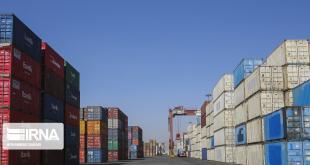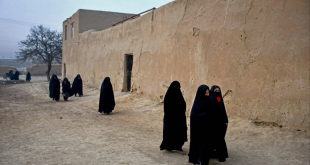By Tamkin Azizi
China is the largest manufacturer and exporter of products in the world. It is also the world’s fastest-growing consumer market and the world’s second-largest products importer. In terms of facilities, China is a net importer. It is the world’s largest trading nation, and it plays a significant role in international trade. In recent years, it has become more involved in trade organizations and treatise as well.
China, the world’s most populous country, is no longer poverty stricken.
Poverty reduction is the most telling evidence of China’s progress in human rights. In fact it’s also a decisive victory for humanity.
This country has lifted 770-800 millions people out of extreme poverty in rural communities. Such a significant accomplishment for Asia, especially China, which has made historic improvements in eradicating absolute poverty. It was a major issue that had bothered China for thousands of years.

Eradicating poverty in a world with a population of 1.4 billion people may seem too optimistic or unimaginable. However, it was a goal that China completed because the aim of socialism is to achieve universal prosperity.
China contributed more than 70% of global extreme poverty reduction, more than any other nation. China’s economy has grown day by day to become one of the world’s most strong engines of development.
To achieve the United Nations 2030 plan for sustainable development’s poverty reduction goals, more than 700 million people have been lifted out of poverty. The announcement was made at the beginning of the 73rd session of the World Health Assembly, ten years ahead of schedule by the Chinese government.
China rose from poverty to become one of the world’s most powerful economic forces in less than 70 years and successfully implemented a series of historic market reforms to open up trading routes and investment flows over the last 40 years, lifting hundreds of millions of people out of poverty.
Poverty is so severe that it has affected the satisfaction and enjoyment of human rights; as a result, reducing and eliminating poverty is an important part of human rights protection.
The Chinese government has persevered in its efforts to eradicate poverty, boost people’s well-being, and steadily achieve common prosperity in recent decades.
Since the late 1970s, when the Chinese government began reform and opening up, it has worked incredibly hard to alleviate poverty, establishing special poverty-relief institutions, identifying targeted areas and populations, allocating specialized funds, formulating poverty standards and special preferential policies tailored to China’s national conditions, and steering its poverty policy.
The government has implemented large-scale development-oriented poverty eradication programs across the country in a planned and organized manner, as well as a series of medium- and long-term projects such as the Seven-Year Program for Lifting 80 Million People Out of Poverty (1994-2000), the Outline for Development-Oriented Poverty Alleviation for China’s Rural Areas (2001-2010), and the Opinion Survey on Poverty Alleviation in China’s Rural Areas (2011-2020). Poverty alleviation has been a crucial part of China’s national strategy.
Rural health insurance and pensions have improved since the early 2000s to help close the gap with the urban social security system. A rural minimum basic living guarantee (Dibao) offers an unconditional cash transfer to poor citizens in rural areas (6.2 percent of the rural population as of April 2019). In rural areas, a stronger social safety net has improved the quality of life and aided economic development.
China’s nearly 100 million impoverished rural residents was living below the poverty line became free of poverty in 2020. All 832 impoverished counties have now been lifted from their plight.
Share of global output sourced, making it the world’s second biggest economy at market exchange rates and on track to overtake the world’s largest at purchasing power rates soon. The introduction of China as a market economy has helped the global economy considerably, and China’s economy has continued to expand even through the financial crisis. At 8%, it occupies a territory that no other country can equal.
Rural policy has moved to a more integrated and holistic approach to strengthen economic, social, and environmental well-being in rural areas since the 2010s. Agriculture’s support was gradually moved away from sustaining grain self-sufficiency and toward ensuring long-term food security through sustainable natural resource management.
Institutions that are cutting-edge. Small-scale farm reorganization and rural land use innovation is implemented. Individual households were given land contract rights under the Household Responsibility System, which began in the late 1970s. In the early 1980s, this initial reform increased agricultural production, but it also resulted in a limited and fractured farm structure.
Infrastructure investments are significant. Roads, the telephone system, and the internet were among the network infrastructure investments made in rural areas, in addition to improving basic agricultural infrastructure such as irrigation and drainage. It linked farmers to markets and allowed rural areas to grow manufacturing and service industries.
In rural areas, high internet and mobile network penetration has increased the use of information and communication technologies. Taobao and other e-commerce platforms have been critical in linking farmers with end-users and orienting agriculture to be more demand-driven.
During the COVID-19 pandemic, e-commerce played a critical role in keeping food supply chains running. E-commerce companies invested in logistics and marketing infrastructure, as well as training for farmers to implement emerging technology, in addition to offering a forum for transactions. A new model of development driven by the private sector is emerging as a result of the growing involvement of tech companies in rural development.
The impressive accomplishments of China’s poverty reduction strategy will go down in history as a watershed moment in the global battle against poverty. The Chinese government, on the other hand, is well aware that the battle will be difficult because the country still has a large population living in abject poverty, and solutions to their problems are becoming increasingly expensive and complex. Faced with these major issues, China has reached a critical stage in its poverty reduction efforts, which would be difficult to crack.
China has used its fruitful experience to help other developing countries tackle poverty in recent decades.
 Afghanistan Times
Afghanistan Times




